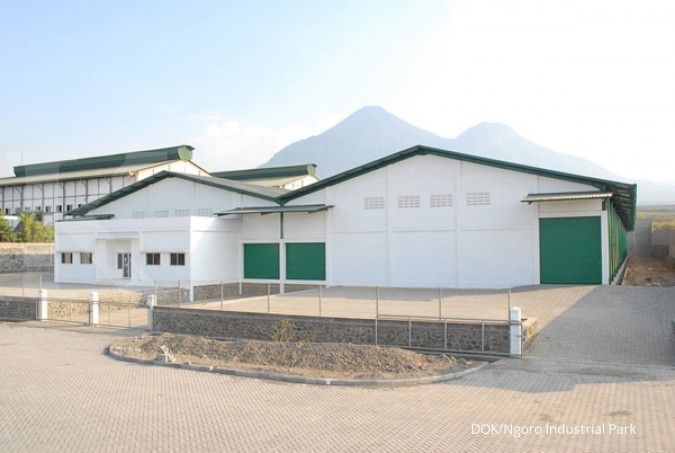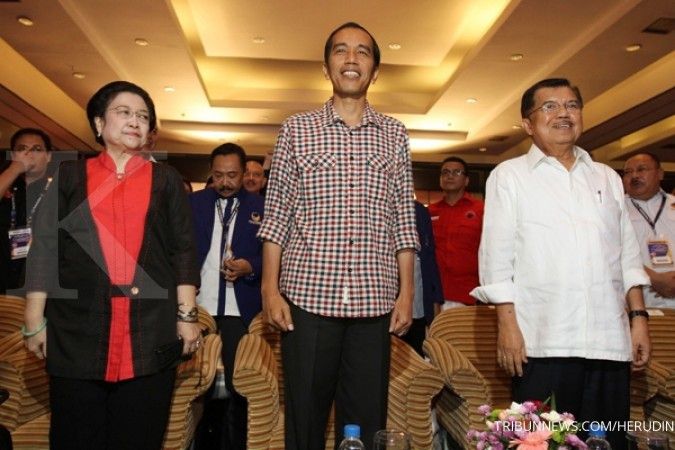JAKARTA. The government plans to build a large number of industrial estates outside Java within the next two decades, aiming to spread industrial growth to less developed regions and to create significant multiplier effects in Southeast Asia’s top economy.
The Industry Ministry’s secretary-general Ansari Bukhari said Monday that the ministry would set up at least 36 industrial estates over the next 20 years on islands other than Java, which has already received multi-billion dollar investments in previous years.
The new estates are to serve as supporting infrastructure to help develop the regions that are slated to become the nation’s key industrial centers.
“As industrial infrastructure, industrial estates are public goods. And the government is in charge of it because the private sector has no interest in it,” Ansari told reporters at his office.
The government’s move, part of its mandate under the Industry Law passed late last year, will help meet its target of raising the ratio of manufacturers outside Java from 27 percent of the total to 40 percent
by 2025.
The ministry’s priority until the end of this year is to complete the development of two industrial estates in Morowali, Central Sulawesi, and Kuala Tanjung, North Sumatra, along with two special economic zones in Palu, Central Sulawesi, and Bitung, North Sulawesi.
A greater spread of industrial estates to islands other than Java will allow the regions to increase their share of the country’s gross domestic product (GDP) from the current 42 percent.
Fifty-five of the country’s total 74 industrial estates that were in existence last year are located in Java, Indonesia’s most populous island.
Those 55 cover 22,795.9 hectares, which represents 75 percent of the total size of all industrial estates, according to Industry Ministry statistics.
The government’s role in the development of industrial estates in Indonesia still lags behind its Southeast Asian peers.
The Indonesian government is only involved in 6 percent of existing industrial estates in the country, with the majority of the remainder being controlled by private developers.
That compares with 78 percent involvement by the Malaysian government and 48 percent by the Thai government.
The minimal government ownership of industrial zones has played a role in pushing up selling prices, as well as rents, nationwide.
The selling price of land in Bekasi and Karawang in West Java hit US$191 per square meter in 2012, which is much higher than in other countries.
In Manila, the Philippines, the selling price of land stood at between $52 and $102 per square meter. Meanwhile, in Bangkok, Thailand, it was at $119, according to data from the Japan External Trade Organization (JETRO) compiled by the ministry.
Similarly, monthly rent prices in Bekasi and Karawang reached $19.10 per square meter, which was more expensive than the $2 to $6 per square meter charged in Manila and $6.95 in Bangkok.
Indonesian Institute of Sciences (LIPI) economist Latif Adam said the government’s plan to spur the development of industrial estates in regions outside Java had emerged back in the 1980s, but it proved hard to realize because of several issues, particularly human resources, infrastructure and governance.
Learning from its past failure, the government decided it needed to pay attention to these factors to implement its plan.
“The principle of equal distribution practiced through building one industrial estate in each province must be abandoned,” Latif said.
“The government should lay out carefully which regions are ready to do that viewed from the readiness of their human resources, infrastructure and governance.” (Linda Yulisman)
Govt to develop industrial estates outside Java
July 22, 2014, 04.10 PM
| Source: The Jakarta Post

ILUSTRASI. Perbankan mencatat kredit tumbuh 10,53% secara tahunan pada Januari 2023.ANTARA FOTO/Reno Esnir/tom.
Editor: Hendra Gunawan
Latest News
Most Popular
- Indonesia Central Bank Intervenes in Forex Markets as Rupiah Slides
- Oil Prices Rise on Solid China Growth, Middle East Tensions
- Oil Prices Fall After Iran Attack as Market Ddraws Down Risk Premium
- Jordan, Iraq and Lebanon Reopen Airspace After Iran Attacks
- Wall Street Week Ahead-Surging US Energy Shares Reflect Robust Growth
- Indonesian Wholesale Car Sales Down 23.9% YoY in Q1 2024
- China's Q1 GDP Growth Likely to Slow, More Stimulus on The Cards
- Indonesian Stock Market Prone to Correction After Long Holiday
- Asia Stocks Slide, Gold Rises as Middle East Conflict Sparks Safety Rush
- China's Q1 GDP Growth Likely to Slow, More Stimulus on The Cards











